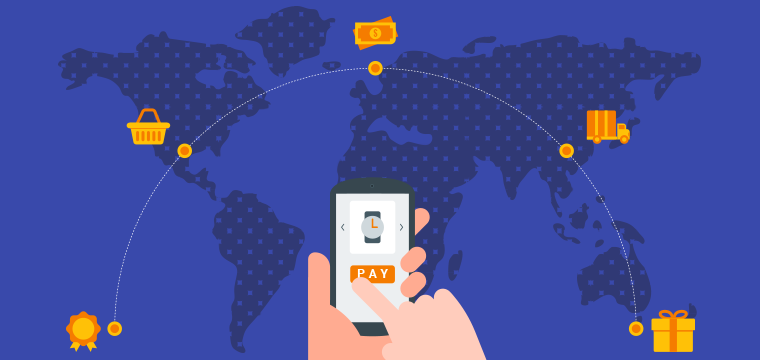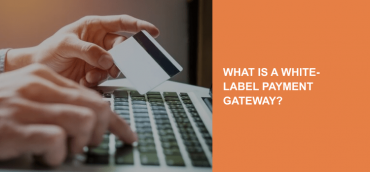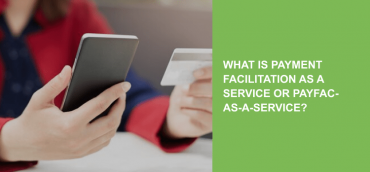In-app payments seem to be an extremely hot topic. No wonder market’s giants like Apple are launching their mobile-payment systems to create a seamless in-app payment experience.
Of course, implementation of the in-app payments has the potential to skyrocket your revenue. The truth is in 2017, the number of global sales from in-app payments reached $37 billion.
However, even though people are more likely to use their smartphones for banking purposes and do make occasional in-app purchases, they are not as willing to pay for goods and services in one click using just their phone. So, in-app payments won’t be their first choice.
So, before you make a final decision regarding the implementation of the in-app payments, you need to take a look at this list of their advantages and disadvantages. This way, you’ll be able to make an informed decision.
In-app payments pros
-
No redirections.
Remember how we talked about payment mistakes that kill your conversion rates? Well, redirection is one of those rookie mistakes to be aware of.
It took you long enough to bring a customer into your app. And we are 100% sure that you don’t want to spend all those money and efforts in vain. And that is exactly why you should use the in-app payments.
They do not require redirections. The whole payment process takes place inside the app.
As a result, a satisfied user will not only agree to make another in-app payment when the occasion arises but also will not abandon the cart as it often happens when redirection takes place. -
It looks native.
While still on the topic, the fact that you don’t redirect a user to a new page also translates into a native design of the payment page. A payment page inside the app looks more trustworthy. After all, the client has agreed to pay for YOUR goods and services. How can he trust a third-party you are sending him to after he presses a “Buy Now!” button?
Besides, the native design is always beautiful. And given that most people perceive information visually, it’s vital to ensure that your app looks flawless and wholesome. It boosts the desire of customers to make in-app payments. -
It’s often safer than a credit card.
According to Bryan Yeager, paying with one’s phone is often a much safer solution than paying with a credit card. When dealing with in-app payments, users receive one-time authorization codes which make it impossible for criminals to steal their confidential information. Besides, online systems are protected by various certificates, like PCI DSS which ensure no data leaks whatsoever.
Besides, credible app developers also apply fraud and chargeback prevention to predict or foresee potential fraudulent activities and protect their clients. Card-present transactions don’t have this privilege. As a result, in-app payments are safer than conventional card operations. -
They’re simple.
In-app payments are simple. You need no higher education to tackle the task of paying for service inside the app. It’s a no-brainer. Just enter some necessary information, click on one button, or even take advantage of the autofill feature. In case you use the latter, paying for things will be a matter of seconds. Who wouldn’t love it?
These are the basic pros of in-app payments. Now let’s look at the second side of the coin.
You might also like Virtual Terminal Account: Why Every Business Needs One
In-app payments cons
-
Obtaining certifications is not simple.
To be able to accept payments inside the app, you need to obtain special certifications. And it has never been easy.
In case of a PCI DSS certificate, you need to ensure that your application complies with numerous requirements and meets the expectations of the controlling bodies.
But there is a solution: you can always use the assistance of a trustworthy Payment Service Provider. They know how it works and can get you through this process. -
Implementing in-app payments is hard.
Sure thing, you can find samples of code that implements in-app payments into your application. However, that is just the tip of an iceberg. Think of all the expenses on the customization of that code and the design!
What seems to be a simple feature might turn out to be a pricey addition to your application. So, you have to think twice before launching it. -
It won’t bring in revenue right away.
With all the expenses on in-app payments development, design, and maintenance, you won’t get revenue right away. It’s an investment in the future. Besides, a certain percentage of all the money users spend inside your app goes to the store app.
That is the reason why we recommend to hang on a bit before rushing into in-app payments. -
In-app payments require additional customer support.
And this translates into more money spent. The developers will have an increased workload due to all the fixes they are to make when something doesn’t work well. Moreover, you will need more people in your Customer Support. Customers paying for your goods and services want their problems solved right away. So, hiring full-time staff to work around-the-clock is essential if you want the sales to grow.
It might be a bit expensive. Yet, it will have positive fruit in the long run. Train your staff to work with clients and solve any in-app payments issues. This can be your key to increased revenue. -
In-app payments might repel customers.
Yes, there is a possibility that users who are used to using your app for free won’t be happy to pay for some features. Moreover, a lot of them feel entitled to get every new update for free. And they feel frustrated when asked to pay for anything. As a result, bad reviews might flight right in. No self-respecting app owner wants them. Yet, they happen when in-app payments are implemented.

Now that you know pros and cons of in-app payments take your time to analyze whether you really need them. Don’t rush into anything before you outweigh the pros and cons.
And in case you need professional help, you can always contact us for a solution. Ikajo International knows its way around payment solutions!






